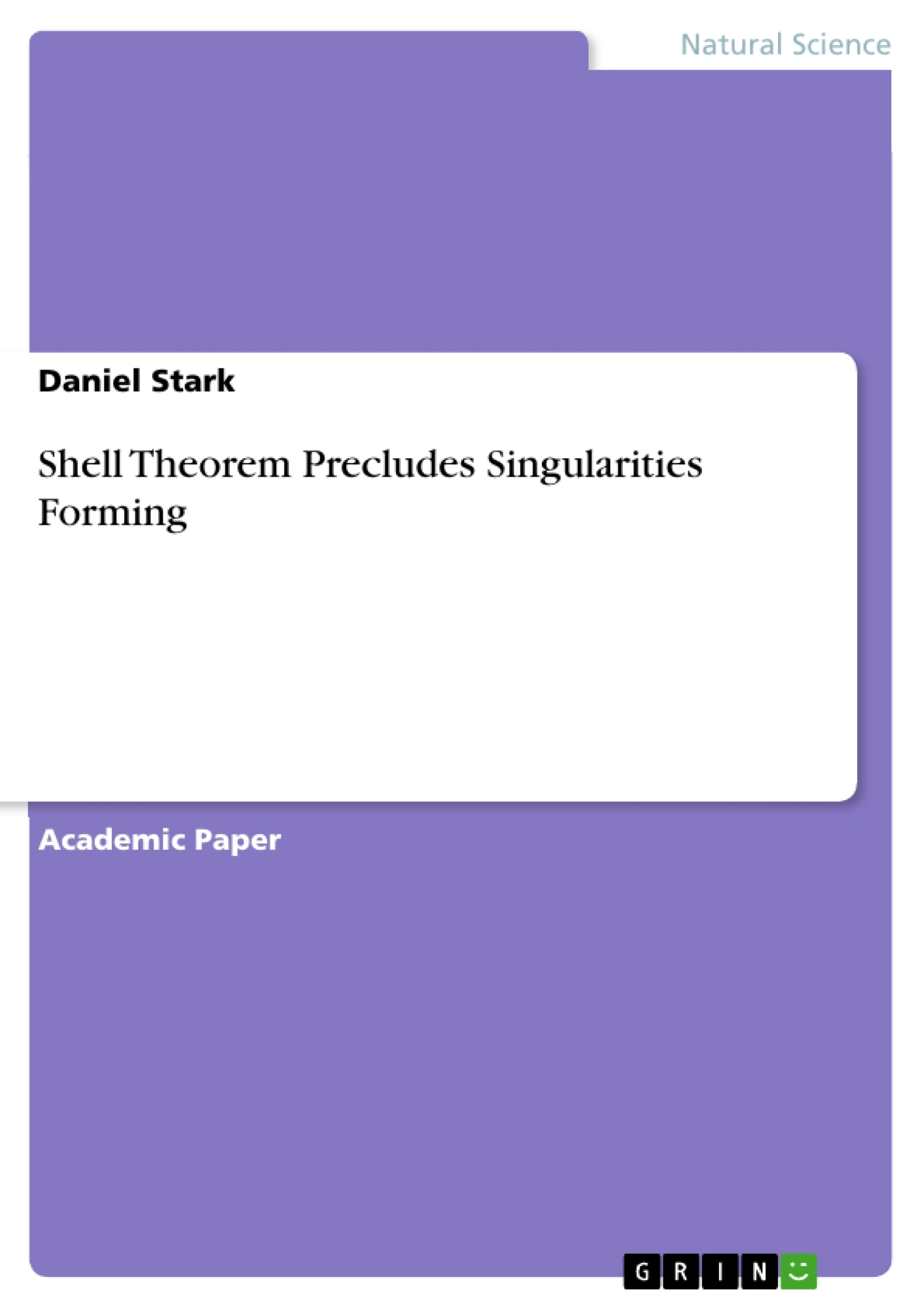By applying Newtonian physics, it can be shown that a singularity cannot form inside a Black Hole (BH) or anywhere in the universe. Currently, BHs are theorized inside BHs; however, these theories ignore Newton's Shell Theorem. By applying General Relativity and an incorrect maths model wherein all mass is treated as being at the centre of a mass, the gravitational field approaches infinity. Treating the mass as being at the centre of a spherical mass is only correct outside the mass body. Newton's second theorem describes the gravitational field inside a spherical mass, which is zero at its centre rather than approaching infinity.
BHs with a singularity is predicted to trap photons; however, photons can escape a BH with an increase in wavelength. Radio stars may be the result wherein all visible photon wavelengths have been shifted outside the visible region, making the BH appear black. The gravitational mass does bend the photon's path, causing some oblique photons to orbit a BH.
Inhaltsverzeichnis (Table of Contents)
- 1. Introduction
- 1.1. Theory for Singularities
- 1.2. Concept Errors
- 1.3. BH Radiation
- 1.4. Gravitational Field vs EM Fields
- 1.5. Pressure & Particle Strength vs EM Fields
- 1.6. Gravitational Attraction vs EM Fields
- 2. References:
- 3. Figure Citations
Zielsetzung und Themenschwerpunkte (Objectives and Key Themes)
This paper aims to challenge the prevailing theory of singularity formation within black holes (BHs) by applying Newtonian physics, specifically Newton's Shell Theorem. It argues that current models incorrectly treat mass concentration and fail to account for the behavior of gravitational fields within a spherical mass.
- The application of Newton's Shell Theorem to black hole formation.
- The critique of existing mathematical models used to predict singularities.
- The analysis of photon behavior near and within black holes.
- The examination of gravitational fields in relation to electromagnetic fields.
- The refutation of the "singularity fantasy" as a flawed theoretical construct.
Zusammenfassung der Kapitel (Chapter Summaries)
1. Introduction: This introductory chapter lays the groundwork for challenging the established theory of singularity formation within black holes. It introduces the central argument that the application of Newton's Shell Theorem, a well-established principle in Newtonian physics, refutes the possibility of singularities. The chapter highlights the conceptual errors in current models, emphasizing the incorrect treatment of mass distribution within black holes and the consequent miscalculation of gravitational fields. The introduction also briefly touches upon the behavior of photons near black holes, suggesting that their escape, albeit with wavelength shifts, contradicts the notion of complete entrapment by a singularity. The chapter sets the stage for a detailed examination of these concepts in subsequent sections.
Schlüsselwörter (Keywords)
Black holes, singularity, Newton's Shell Theorem, General Relativity, gravitational field, photons, spacetime, event horizon, mathematical models, escape velocity.
Frequently Asked Questions: A Comprehensive Language Preview
What is the main topic of this paper?
The paper challenges the prevailing theory of singularity formation within black holes (BHs) by applying Newtonian physics, specifically Newton's Shell Theorem. It argues that current models incorrectly treat mass concentration and fail to account for the behavior of gravitational fields within a spherical mass.
What are the key themes explored in this paper?
Key themes include the application of Newton's Shell Theorem to black hole formation; a critique of existing mathematical models used to predict singularities; analysis of photon behavior near and within black holes; examination of gravitational fields in relation to electromagnetic fields; and refutation of the "singularity fantasy" as a flawed theoretical construct.
What is the significance of Newton's Shell Theorem in this context?
The paper argues that the application of Newton's Shell Theorem, a well-established principle in Newtonian physics, refutes the possibility of singularities in black holes. It suggests that current models misinterpret mass distribution and consequently miscalculate gravitational fields.
How does the paper address the behavior of photons near black holes?
The paper suggests that the escape of photons near black holes, albeit with wavelength shifts, contradicts the notion of complete entrapment by a singularity. This observation is used to further challenge the singularity theory.
What are the main chapters covered in this preview?
The preview includes an introduction, which lays the groundwork for the main argument, and references and figure citations are also listed. The introduction specifically addresses theoretical issues surrounding singularities, concept errors, BH radiation, and comparisons between gravitational and electromagnetic fields and their effects on pressure, particle strength, and gravitational attraction.
What are the keywords associated with this paper?
Keywords include: Black holes, singularity, Newton's Shell Theorem, General Relativity, gravitational field, photons, spacetime, event horizon, mathematical models, and escape velocity.
What is the overall objective of this research?
The paper aims to challenge the established theory of singularity formation in black holes by providing a new perspective based on Newtonian physics and highlighting flaws in existing models.
Where can I find more detailed information?
The complete paper provides a detailed examination of the concepts introduced in this preview. The table of contents indicates further chapters and sections that delve deeper into the specific arguments.
- Quote paper
- Daniel Stark (Author), 2022, Shell Theorem Precludes Singularities Forming, Munich, GRIN Verlag, https://www.hausarbeiten.de/document/1273018



